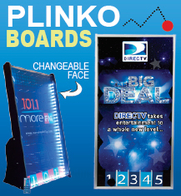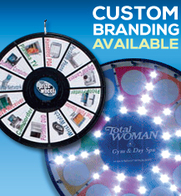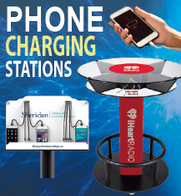 In a previous article titled: Your customer Profile – Part 1 – “The value of creating a customer profile”, I spelled out five reasons why your exhibit program will benefit from the time you take to understand your customer: These five were:
In a previous article titled: Your customer Profile – Part 1 – “The value of creating a customer profile”, I spelled out five reasons why your exhibit program will benefit from the time you take to understand your customer: These five were:
- It is good marketing
- It helps you focus your exhibit planning
- It helps you focus your exhibit staff
- It allows you to create good customer engagement
- It reveals methods of follow-up
Now it’s time to turn to the second part of the discussion which answers the question how you actually create a profile.
Do you know your customer? I don’t mean whether their name is Antonio or Jessica, but rather, do you understand who they are as people and what motivates them?
For many marketers this presents a major dilemma. They mistakenly assume that their product, service or program has broad appeal and that creating a customer profile will limit the scope of their marketing reach. Some assume that their potential customers may not know that they have a need and all it takes is a bit of persuasion. Others assume that the product is a one of a kind with a wide appeal. So the first step is to define your customer – the person who will buy, recommend or authorize the budget for your product or service.
This may sound like a broad approach but upon closer examination you see that the person you are targeting has identified a problem and is actively searching for a solution either fro their company or themselves.
Next ask what information you need in order to identify this person. The answer is uncovered when you use four basic marketing tools: demographics, psychographics, behavioural and causation data.
Demographics answer the question, “Who is my customer?” It is an analysis of all the pertinent data that defines the characteristics of your customer. Demographics enable you to segment your overall customer base into helpful categories.
In a business-to-customer example, you may define your customer demographics in the following terms: age, income, gender, geography, profession, education, wealth, family makeup, nationality, homeowner/renter, etc. For business-to-business focus the demographics qualifiers may include: size of company, type of products sold, revenue, budget, number of employees, number of branches, ownership, industry, industry sector, age, and so on.
Psychographics answer the question, “What do they do?” This is a chance to examine your target audience’s attitudes, beliefs, and emotions. The following are samples of psychographic variables in the business-to-customer marketplace: family stage, hobbies, status awareness, outside interests, leisure time, social responsibility, lifestyle, charitable affiliations, etc. In the business-to-business marketplace, psychographic elements include: social responsibility, environmental conscience, business style, position within an industry, innovations, affiliations, employee relations, workforce type, management style, employee remuneration, shareholder relations, and so on. By adding psychographics to the demographic information, you increase the richness of your customer understanding.
Behavioral inquiries answer the question “How do they do what they do?” This is an in-depth look at customer demographics and psychographics in action. Whether you are in a business-to-customer or business-to-business marketplace, you can analyze your customers according to their habits in terms of the number of times they purchase, how often, the amount of product purchased, the decision-making cycle, and where the purchase was made.
Causation analysis answers the question, “Why do they do what they do?” Causation is the sum total of all the demographic, psychographic, and behavioral data you have accumulated. It matches up your features and benefits with your customers’ perception of their importance. Take a look at the chart below. In the column to the left I have assumed, for demonstration’s sake, that your company’s features are price, brand, variety and so on. If none of my suggestions ring true then replace them with the features of your product or service and continue with the exercise.
If you can complete it quickly, congratulations—you know your customer well. If not, consider consulting your customers. Ask them how they rank your features in order of importance. If, for example, you find your customers’ primary need is price, then offering a “show special” at your booth might be helpful. If you find that status ranks high on your customers’ wish list, then participating in a show that attracts the cream of the crop will make a lot of sense.
Take the time to compete the table below.
|
High
|
Medium
|
Low
|
Not at All
|
|
| Price | ||||
| Brand Name | ||||
| Status | ||||
| Variety | ||||
| Convenience | ||||
| Warranty | ||||
| Salespeople | ||||
| Customer Service | ||||
| Promotion | ||||
| Payment Terms | ||||
| Quality | ||||
| Flexibility | ||||
| Other |
By understanding demographic, psychographic, behavioral and causation data, you have developed a clear portrait of your customer. Your analysis may also reveal that you have more than one customer profile.
Creating customer profiles may sound like an onerous task particularly for those companies who do not have dedicated market research personnel but with a bit of planning you and your staff can use each customer interaction as an opportunity to learn a bit more about these people. Once you get in the habit of collecting research you will wonder how you ever managed without it.
About the Author
Jon Edelman provides exciting trade show marketing ideas, including advice about prize wheels, customizable scratch-off cards, money blowing machines, and other exciting trade show attractions. With years of experience in the trenches, he is an expert on booth displays, lead generation techniques, and networking with trade show vendors. Helping to build a referral-generating system, his ideas continuously lead to a boost in sales and revenue.



















